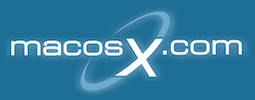Ok, I have been wanting to add an external hard drive. I would like to get the WD My Book Premium ES Edition, a 500gb USB or eSATA drive. The problem is that I do not know what other things I need in particular to make it work. If you could provide a suggestion of the correct card and cable, and anything else I would need, I would really appreciate it.
My current setup is a Powerbook G4 Aluminum - 1.25 GHz, running 10.4.10
* I apologize in advance for any incorrect computer terminology I may have used. I am not a computer genius, just a college student needing more storage space.
My current setup is a Powerbook G4 Aluminum - 1.25 GHz, running 10.4.10
* I apologize in advance for any incorrect computer terminology I may have used. I am not a computer genius, just a college student needing more storage space.

